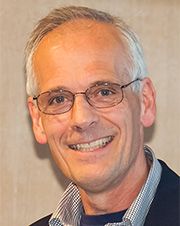Measuring variations in the seismic velocity as a diagnostic of rock damage and healing
OR
SEG members, view the course for free!
Format: Virtual Webinar. 45 min. presentation followed by 15 min. Q&A
An optional post-lecture workshop will immediately follow each lecture for expanded Q&A and networking
Session 1, Tuesday, Sept 13, 2022, 10 am to 11 am US Central Time
Session 2, Tuesday, Nov 8, 2022, 10 am to 11 am Beijing Time
Past SEG Recordings SEG Members Free Access Details
Two live sessions are completed. Please scroll down to watch the videos from the recordings below. SEG members, view the course for free!
Abstract
Interferometric methods in seismology have made it possible to detect time-lapse changes in the seismic velocity with an accuracy of about 0.1%. Combined with using noise as a seismic source it is under the right conditions possible to detect such velocity changes on a near-continuous basis. I will show examples of detecting velocity changes in the laboratory, the earth's near-surface, and engineered structures. Perhaps surprisingly, the seismic velocity is not constant at all, it varies with the seasons, temperature, precipitation, and ground shaking. One of the intriguing observations is that after deformation the seismic velocity recovers logarithmically with time. The reason for this particular time dependence is the presence of healing mechanisms that operate on different time scales. Since multi-scale relaxation is a feature of many physical systems, logarithmic healing is a widespread behavior that is akin in its generality to the Gutenberg-Richter law.
Your Instructor

Roel Snieder holds the W.M. Keck Distinguished Chair of Professional Development Education at the Colorado School of Mines. He received in 1984 a Master's degree in Geophysical Fluid Dynamics from Princeton University, and in 1987 a PhD in seismology from Utrecht University.
In 1993 he was appointed as professor of seismology at Utrecht University, where from 1997-2000 he served as Dean of the Faculty of Earth Sciences. Roel served on the editorial boards of Geophysical Journal International, Inverse Problems Journal, Reviews of Geophysics, the Journal of the Acoustical Society of America, and the European Journal of Physics. In 2000 he was elected as a Fellow of the American Geophysical Union. He is the author of the textbooks A Guided Tour of Mathematical Methods for the Physical Sciences, The Art of Being a Scientist, and The Joy of Science published by Cambridge University Press. In 2011 he was elected as Honorary Member of the Society of Exploration Geophysicists, and in 2014 he received a research award from the Alexander von Humboldt Foundation. In 2016 Roel received the Beno Gutenberg Medal from the European Geophysical Union and the Outstanding Educator Award from the Society of Exploration Geophysicists. In 2020, he received the Ange Melagro Prize for his outstanding class Science and Spirituality. From 2000-2014 he was a firefighter in Genesee Fire Rescue where he served for two years as Fire Chief.

